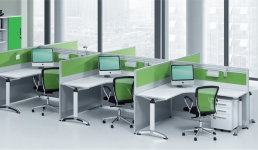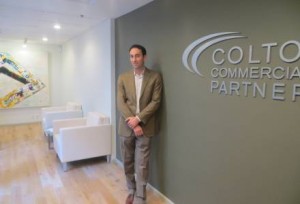
When it comes to running an office build-out project, it’s easy to forget how important furniture plays in the puzzle of a successful project. It is key to hire a furniture rep who can help procure the best solutions to properly dovetail with the project’s design and construction.
Adam Felson from Colton Commercial & Partners sat down with Tamra Lambert, Account Executive at Inside Source / Young, a furniture rep with offices in the Bay Area and New York, to learn more about today’s trends and what to think about when ordering new furniture…
Felson: How do you service a client on a tight budget who wants a contemporary look?
Lambert: We look at many options and narrow it down for them. Lead-time, budget and aesthetics are the determining factors and what guide the choices we ultimately present to the client. Sometimes “retail” is the way to go to meet a tight budget, but quality often suffers – you really do get what you pay for.
Felson: What design styles are you seeing clients asking for in their common area furniture?
Lambert: Simple, clean lines, a “kit-of-parts” type approach so that as their needs/available space change, the furnishings can as well. I have been seeing lots of requests for the following items: laptop tables, powered everything (sofas, tables, dividers) and a more cozy feel in all pieces – things that look more residential.
Felson: How do you collaborate your design expertise with the rest of the project team?
Lambert: Everything is really driven by the client and what their lead-time, budget and aesthetics are. My job is to know where to look and be able to offer the best options to meet the majority of their requirements. We also have technical designers on staff who are experts at layout, electrical, etc. for the systems furniture we recommend for our clients. It takes the whole team to make things work.
Felson: What advice can you give your future clients on what they can do to make you more effective in procuring the best possible furniture program for their office?
Lambert: Be open to creative ideas, have a clear (and hopefully realistic) budget and time-line, be able to make decisions and stick with them.
Felson: Do you think density / benching is here to stay?
Lambert: In part, it has gone to such an extreme that workplace environments haven’t made enough room for individual/heads down/quite work. I think it’s a great way to work with the addition of phone rooms and a variety of other work options in other areas, such as lounge seating, touch down points, etc.
 Let’s just say they had been there a while. Director of Project Management Adam Felson lead the Concordia-Argonaut Club through a challenging process this past December. After occupying 1142 Van Ness for about 125 years, the club sold the property and needed someone to help inventory its many contents and determine where everyone was to go. The club is in a temporary location while it seeks a new home. Adam went through everything from books to leather seating and from kitchen to athletic equipment. Everything had to be stored for the new facility, sold, donated, disposed of. The 50,000 building had lots of great memories and the club looks forward to what the next home will bring.
Let’s just say they had been there a while. Director of Project Management Adam Felson lead the Concordia-Argonaut Club through a challenging process this past December. After occupying 1142 Van Ness for about 125 years, the club sold the property and needed someone to help inventory its many contents and determine where everyone was to go. The club is in a temporary location while it seeks a new home. Adam went through everything from books to leather seating and from kitchen to athletic equipment. Everything had to be stored for the new facility, sold, donated, disposed of. The 50,000 building had lots of great memories and the club looks forward to what the next home will bring.



